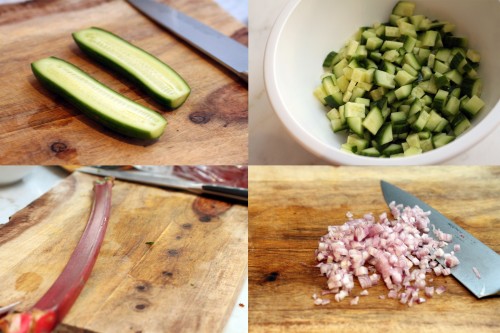WILD SPRING: FORAGING SPRING'S FIRST ARRIVALS
When you work in a kitchen and the season changes from winter to spring, there is nothing more exciting than seeing all of the spring (green!) produce coming in. The beginning of spring is all about edibles foraged in the wild, and these are not your every day vegetables that you see year-round in the grocery store. For me, they are the most delicious part of the season. I've only seen a few of these at the market this week, but keep an eye out! They will all pop up soon and have pretty short seasons (less than 2 months).
RAMPS
Ramps, also known as wild leeks, are probably my favorite of the spring foraged greens. They have a big leafy top and a skinny bottom with a little bulb and a bold garlicky-onion flavor. The leaves are great sautéed in olive oil with salt and pepper or marinated in olive oil and thrown on the grill. The bottoms are delicious pickled with a simple pickling liquid. I recently came across a recipe to use both the stem and greens in a compound butter; what a genius idea to savor the flavor for months to come!
FIDDLEHEAD FERNS
Photo: The Kitchn
Fiddlehead ferns are another early spring, short season veg. These cute little pinwheels are the beginning of a fern plant. They are delicious when cooked, but unlike other veggies, you can’t eat them raw. Treat them as you would asparagus when it comes to eating them on their own (blanching, sautéing, steaming). They are also great in pasta and rice dishes and are even perfect as a curry.
GARLIC SCAPES
Garlic scapes are the top of the garlic plant that is above ground. They are harvested from the plant in order to focus all of its energy on the bulb below the surface to produce flavorful garlic. Scapes have a very mild, garlicky flavor to them and are delicious raw or cooked. You can substitute them in dishes for scallions or even pickle them like ramps - there are endless ways to cook them.
STINGING NETTLE
Photo: Food52
Have you ever touched a plant and had a crazy, stinging pain in your hand as if you had been stung by about 20 fire ants? I have, while on vacation in England, and it was not fun. And now this plant, the stinging nettle, has been popping up in menus everywhere making me have flashbacks! Luckily, the stinging goes away once the plant is cooked, and nettles are delicious (and healthy) when cooked! Nettles make a great substitute for spinach, are delicious in omelettes and work really well in a pesto!
SPRING ONIONS
Spring onions are very young onions that are picked before they mature. They look like scallions but have a more rounded bottom to them. These onions have a much milder flavor and are delicious eaten both raw or cooked. They are great tossed in olive oil, salt and pepper and thrown straight on the grill or sauté and add them to any recipe that calls for onions ( think soups, tarts, breads!)
MORELS
The only non-green edibles on this list are morels, gorgeous mushrooms with a deep earthy and umami flavor. You want to find ones that are on the firmer side, and deep-cleaning these is a must! Their crevices hide more dirt than you can imagine, so soaking them in cold, salted water helps draw everything out. After that, they don't need much though they shouldn't be consumed raw - a little butter-poaching is always delicious or even a quick sauté with some ramps or spring onions. Butter and cream seem to bring out what's best in this mushroom; this pan butter-fry method is amazing, and I love them in a pasta.
Enjoy!













